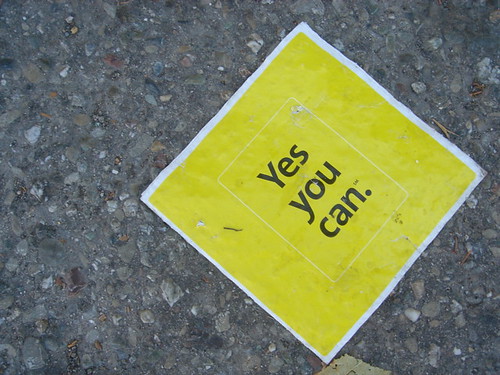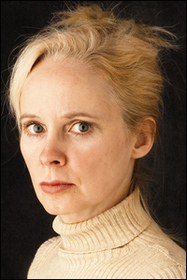So November is halfway over–you’re half done writing your novel for NaNaoWriMo, right?
Right?
Whether you’re doing NaNoWriMo or not, there are always those days–or weeks, or months, or, let’s face it, years–when you just feel like you Cannot. Write. Anything. I don’t claim these are foolproof solutions, but here are my own personal tips to get started working again.
 1. A journey of a thousand pages begins with opening your document.
1. A journey of a thousand pages begins with opening your document.
Maybe it’s just me–but 90% of the time, just opening up the right file seems like a big step. I find a million other places to click: Facebook, the New York Times, that video of the sneezing baby panda for the hundredth time. And yet, once I suck it up and double-click that file and come face-to-face with my half-finished story, I usually find myself tinkering a little here, adding a little there… and lo and behold, an hour or two of work occurs.
If you have this problem too, here’s the fix: Set your computer to auto-open your documents when you turn it on. For Mac users, make your current short story/novel chapter into a login item (instructions here). And Windows users, just put your work-in-progress into the Startup folder (instructions here). Next time you start your computer, your documents will open automatically–and your own work-in-progress will be be right there, ready for you. No excuses!
 2. Revising is always easier than writing.
2. Revising is always easier than writing.
I’m pretty convinced this is one of the great truths of the universe, right up there with Newton’s laws. It holds true no matter what you’re working on: application essays, term papers, dissertations, short stories, novels. You want to produce something great, but as soon as you think that, paralysis sets in. So focus on just getting something down on paper–anything. A paragraph. An outline. Keywords, a snatch of dialogue, a pertinent image. Remind yourself that you’re coming back later, and keep moving forward.
In Room to Write, a book of writing prompts, author Bonni Goldberg refers to this process as “making clay.” You can’t sit down and create a beautiful pot right off the bat–the first step is just making the clay. While writing the first draft of my novel, I pinned a sign above my desk that said “Fix that later.” You know what? It helped. And it’s still there.
This brings me to tip #3, which is:
 3. Don’t re-read your own work–while writing.
3. Don’t re-read your own work–while writing.
It is so tempting, because reading is easier than writing. But re-read your drafts-in-progress too much, and your own words gain a feeling of finality, of inevitability. Of course that paragraph has to come after that one. Of course that scene has to end that way. And suddenly, you get stuck. You’re in an alley with no way out.
Only you know how much re-reading is too much, but for me, the process goes like this: open new document (see #1, above). Start reading from the beginning, and when you get to the bottom, start writing. Don’t look back–yet.
 4. Embrace your fear of commitment.
4. Embrace your fear of commitment.
Finally, there are those times when you know just what scene needs to come next, but you can’t get started. For me, this is often a risky scene: an argument, a love scene, a gesture of defiance, a moment of realization–a scene when the story pivots. Those scenes are hard to live through in real life, and they’re even harder to get down on paper.
Next time that happens, try this: open a new document, or get a blank sheet of paper (scratch paper works great for this). Copy the last few lines of your draft as a lead-in, and try writing the new scene on this blank canvas. If it doesn’t work, no problem. Delete the document–or recycle your scratch paper–and try again. Your original draft will be waiting patiently for you, unscathed by these false starts. 99% of the time, that frees you up, psychologically, to dive into murky waters or root through hard places or take whatever risks you need. (And when you’re done, maybe test that scene using the risky email test before you paste that bad boy into your draft.)
Okay, those are my tips for getting started when you’re sure writing is impossible. What are yours?
Further Reading:
- FWR’s Founding Editor, Anne Stameshkin, offers a foolproof way to get yourself started when you’re feeling rusty–and we have lots more writing prompts to help you “Get Writing” in our archives.
- Valerie Laken describes a way around writer’s block and overcoming self-doubt: thinking of the writer as athlete and the teacher as a coach.
- More practical tips on writing a book.






